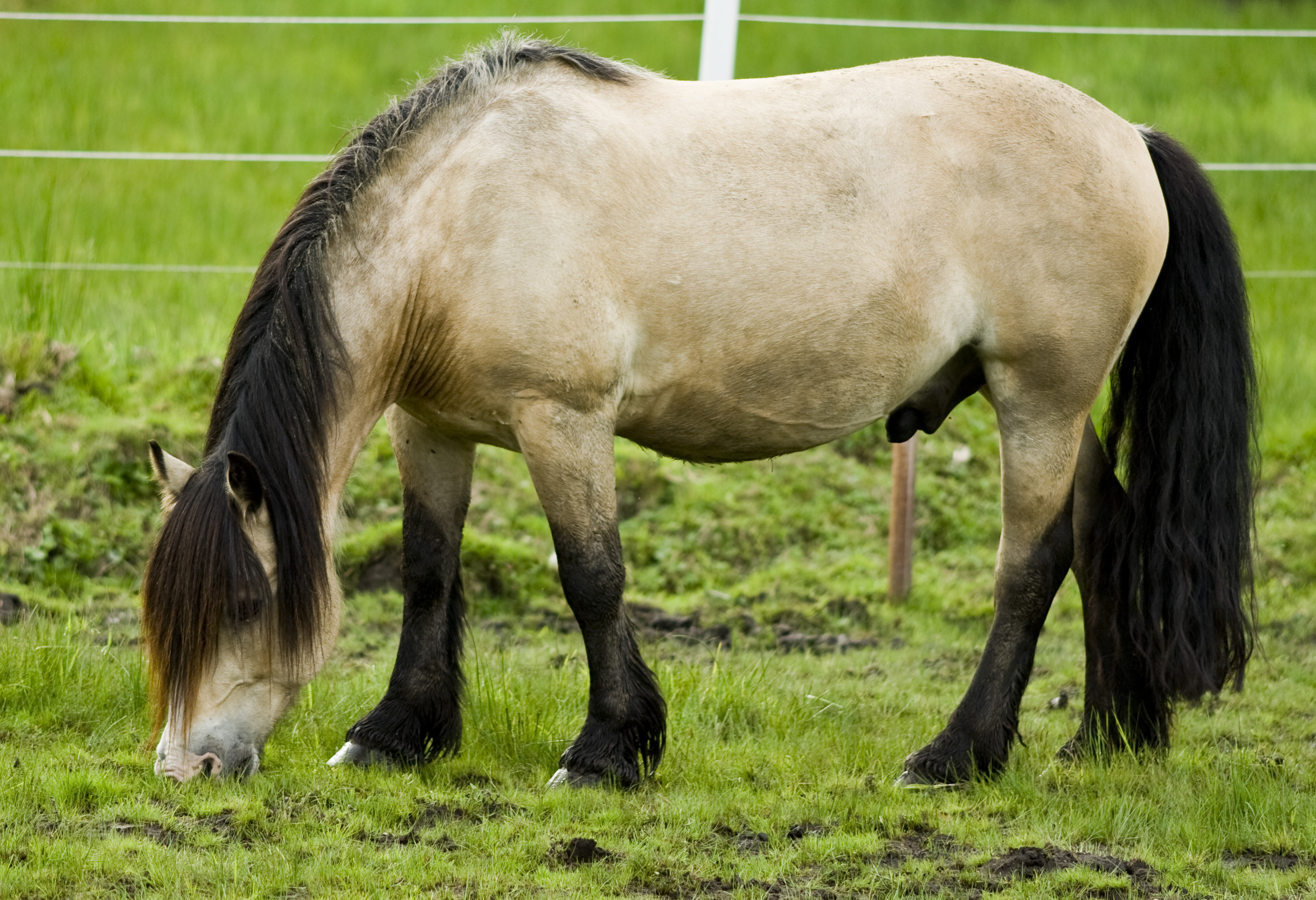- Dole Gudbrandsdal
Infobox Horse
name= Dole Gudbrandsdal
image_caption=Dølahorse eating grass
features = Small draft breed, good trot, used for draft work and harness racing
altname= Dølahest
Dole Trotter
Norwegian Trotter
nickname=
country= Norway
group1=
std1=The Dole Gudbrandsdal, Dølahest or Dole is a draft-type horse from
Norway . There are two subtypes of the breed, the Dole Gudbrandsdal and the Dole Trotter, with the former being used mainly for heavy draft and farm work and the latter forharness racing .Breed history
The Dole is thought to have originated in the Gudbrandsdal Valley, an area connecting the
Oslo region with theNorth Sea coast. It is likely that the Dole is in part a descendant of the Friesian, as the two breeds are similar in conformation, and theFrisian people were known traders in the area between 400 and 800 AD. [http://www.ansi.okstate.edu/breeds/horses/dole/ "Dole"] . "Oklahoma State University". Referenced January 28, 2008.] The Dole Gudbrandsdal closely resembles the EnglishDales Pony andFell Pony , and the two breeds probably share similar origins. [http://www.equinekingdom.com/breeds/heavy_horses/dole_gudbrandsdul.htm "Dole Gudbrandsdal"] . "Equine Kingdom". Referenced January 28, 2008.]The Dole breed has more recently received infusions of
Thoroughbred blood, as well as blood from various trotting and heavy draft breeds. Two stallions had a large influence on the development of the Dole breed. The first was Odin (previously named Partisan), a stallion that was either a Thoroughbred or aNorfolk Trotter . The second was Mazarin, an Arabian imported to Norway in 1934. Since 1941, there have been two sub-types of the Dole Gudbrandsdal breed, each with their own studbook. The original type is the heavier Dole Gudbrandsdal, while a new, lighter type, called the Dole Trotter, has been developed with the addition of more blood from other trotting breeds. Although different types, the two are considered the same breed. The Dole Trotter was especially influenced between 1840 and 1860 by three stallions: Veikle Balder, Toftebrun, and Dovre. Dovre is considered the true foundation stallion of the Dole Trotter type. Bongianni, Maurizio. Simon "Simon & Schuster's Guide to Horses and Ponies". & Schuster, Inc., 1988, pg. 90. ISBN 0671660683] Today, the two breeds are commonly interbred, and the differences between the two are slight.Breed characteristics
The Dole horses generally stand 14.1 to 15 hands (140 to 152 cm) high, weigh 1,190 to 1,390 lbs (540 to 630 kb), and are usually bay, brown or black, with gray,
palomino , chestnut and dun occurring less frequently. White markings may occur on the head and legs, especially on the trotter type. The head is heavy with a straight profile, the neck rather short and muscular, thewithers moderately pronounced and broad, the chest wide and deep, and the shoulder strong, muscular and sloping. The back is long and the croup broad, muscular and slightly sloping. The legs are short but sturdy and well-muscled, with broad, solid joints and tough hooves.When presented for grading and studbook inspection, the heavy-type Dole Gudbrandsdals are tested for pulling power and trotting. In the lighter type, clean x-rays of the knee and lower legs must be presented, and stallions must have satisfactory results on the track before they may be used for breeding. However, three-year-old stallions may be issued temporary licenses before they begin their racing career if their conformation, breeding, and trotting ability are considered acceptable. These strict and organized standards have improved the quality of the Dole breed over the past few decades. Although the Dole horse is one of the smallest draft breeds, it shows great pulling power, and is also hardy and agile. They are especially known for their excellent trots, as is shown by the lighter sub-type of the breed.
Uses
The heavier Dole Gudbrandsdal type is used mainly for heavy draft and agricultural work, as well as timber hauling, while the lighter Dole Trotter is used mainly for harness racing. The Dole Gudbrandsdal was an influential breed in the formation of the
North Swedish Horse , and the two breeds are very similar in conformation.ee also
*
List of horse breeds References
Wikimedia Foundation. 2010.
